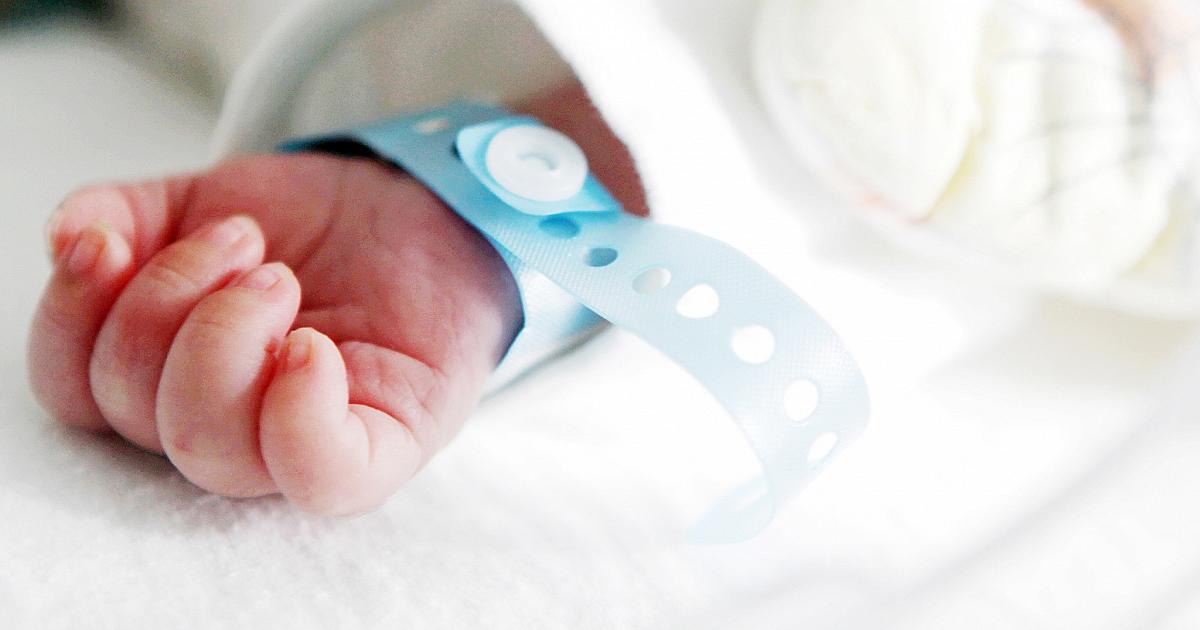What do we call it? What if it was a woman? Naming your children is sometimes a real dilemma. The Italians choose Leonardo at the national level, which maintains the primacy acquired in 2018; in second place, for the first time on the podium, is Edoardo, who gains two positions in 2022. Tommaso is stable in third place, while Francesco leaves the podium, losing two positions and reaching fourth place. For female first names, the situation is unchanged compared to 2022: Sofia still wins in first position and Aurora in second, in third position Ginevra, who moves from fourth, while Vittoria takes her place in fourth position. Giulia, who was third on the podium last year, slips to fifth place.
The photograph comes from Istat with the Report on the birth rate and fertility of the resident population in 2023. Discouraging news, however, on the birth rate front. In 2023, they drop to 379,890, recording a decrease of 3.4% compared to the previous year. And the decline in births continues in 2024: according to provisional January-July data, births are 4,600 fewer than at the same period in 2023. The average number of children per woman is falling: it amounts to 1.20, decreasing in 2022 (1.24) and the provisional estimate established for the first 7 months of 2024 highlights a fertility of 1.21.
Names by region
Leonardo occupies first place in all regions of the Center-North, with the exception of the autonomous province of Bolzano/Bozen where the name of Noé stands out. In the South, where Francesco occupies first place, Leonardo is the preferred name, as in 2022, only in Abruzzo. Francesco is stable in first place in three southern Italian regions (Molise, Puglia and Calabria) while Antonio excels in Campania and Basilicata. In the Islands, Edoardo is first in Sardinia while Giuseppe, after a short break, returns to first place in Sicily.
Among girls, Sofia excels in many regions of the Center-North, with the exception of the autonomous province of Bolzano/Bozen which confirms Emma in the lead, Valle d'Aosta with Alice, Liguria and Lazio where Ginevra excels , from Umbria where Vittoria placed first (also first in Campania). The situation in the South is more varied where Sofia occupies first place only in Molise and Calabria; Aurora excels in Abruzzo, Basilicata and Sicily; Giulia retains first place only in Puglia and Béatrice reaches the top of the ranking for the first time in Sardinia.
Foreign children born to parents residing in our country are mainly called Adam, Ryan (or Rayan), Amir, but also Matteo and Leonardo. Among foreign girls, as among Italian girls, the record goes to Sofia, followed by Sara and Amira.
The preferences of foreign parents differ depending on their nationality. If we consider the four nationalities with the highest number of children born to two foreign parents, the tendency to choose for their children a name common in the host country is more pronounced in the Romanian community. Indeed, among the most common first names among Romanians are Matteo, Leonardo and Luca, while for girls we find Sofia, Emma and Amelia. We see that Albanian parents are more oriented towards choosing first names from their country of origin when it comes to their sons (mainly Aron, Liam and Amar), less in the case of their daughters (Emily, Chloé and Aurora).
Behaviors linked to the traditions of the country of origin are found among parents from Morocco and Bangladesh. Moroccan male children are mostly called Adam, Amir and Rayan; Moroccan girls Amira, Sara and Nour. Bangladeshi parents choose Anas, Abdullah and Rayan for their sons, Inaya, Arisha and Ayesha for their daughters.
Birth rate, the decline does not stop
In 2023, births to the resident population will be 379,890, or 13 thousand fewer than in 2022 (-3.4%). For every 1,000 inhabitants in Italy, just over six children are born, continues Istat. This decline, which leads to a new decline in the birth rate record, is part of a long-standing trend. Compared to 2008, the year in which the number of live births exceeded 576 thousand units, which represents the highest value since the beginning of the 2000s, an overall loss of 197 thousand units (-34.1%) was recorded. . The systematic reduction detected during this period was approximately 13 thousand units per year, corresponding to an average annual rate of change of 2.7 per thousand.
The decline in births, in addition to the now stable low tendency to have children (1.2 children per woman in 2023), is also caused by structural changes in the female population of childbearing age, classically fixed between 15 and 49 years. There are fewer and fewer women in this age group. Today, people born during the baby boom years (from the second half of the 1960s to the first half of the 1970s) have now passed the conventional threshold of 49 years. Most of those who are still of childbearing age belong to the so-called baby bust era, that is, they were born during the twenty-year period 1976-1995, during which fertility fell from more than 2 to the historic low of 1.19 children per child. women.
The decline in births is almost entirely attributable to the decline in births to two-parent Italian couples, who constitute more than three-quarters of total births. People born to Italian parents, or 298,948 in 2023, are approximately 12 thousand fewer than in 2022 (-3.9%) and 181 thousand fewer than in 2008 (-37.7%).
People born into couples where at least one parent is a foreigner number 80,942, down 1.5% compared to 2022 and 25.1% compared to 2012, the year when the maximum number was recorded. Births to two foreign parents have notably decreased, by 3.1% compared to 2022 and by 35.6% compared to 2012 (-28,447 units). The decline in birth rates also continues in 2024: according to the first provisional data referring to the period January-July, births decreased, compared to the same period in 2023, by 4,600 units (-2.1%) .
The average number of children per woman falls by 1.20 in 2023
Italy is close to the historic minimum of 1.19 births per woman recorded in 1995. The provisional estimate established for the first 7 months of this year highlights a fertility rate of 1.21, in line with the figure of the previous year. The average number of children per woman recorded in 2023 brings the country back to the historic low of 1.19 observed in 1995.
Comparing these two values - we read in the report – it must be emphasized that there is a difference in the composition of the female population by nationality: in fact, in 1995, the total fertility index was almost entirely attributable to the behavior women. Italian women, as a contribution of foreign women. The continued increase of the latter after 1995 and their tendency to carry out reproductive projects in Italy contributed to a recovery in fertility, evident in the first decade of the 2000s. From the second decade of the 2000s until the most recent years In recent years, the scenario has changed.
The number of people born to foreign parents is also decreasing
The number of children born to foreign parents is also decreasing in Italy. The decrease in births to parents with at least one partner is foreign continues in 2023. These births, which constitute 21.3% of the total, increased from 82,216 in 2022 to 80,942 in 2023. Since 2012, the last year where a increase was observed compared to the previous year, the decrease was 27 thousand units. The region with the highest incidence of foreign births compared to the total is Emilia-Romagna (21.9%). Among the other northern regions, one in five births is foreign in Liguria and Lombardy; then come Veneto (18.6%), Piedmont and Friuli-Venezia Giulia (17.9%). In the Center, Tuscany stands out (18.1%), while in the South the percentage is much more contained, with a minimum in Sardinia of 3.9% and a maximum in Abruzzo of 10%.
The average age of mothers of their first child is 31.7 years
The average age of mothers at the birth of their first child in Italy in 2023 is 31.7 years, while in 1995 it was 28 years. More generally, considering each birth order, the average age at birth, after two years of stability, increases slightly compared to 2022, going from 32.4 years to 32.5 years in 2023. The average age at birth rate is higher for Italians (33.0) than for foreigners. (29.7). Compared to 1995, the average age at birth of children has increased by more than two and a half years.
The number of births outside marriage continues to increase. In 2023, contrary to what has been observed in recent years, children born out of wedlock have decreased slightly: they amount to 160,942, recording a drop of just over 2 thousand units compared to 2022. However, their impact on total births continues to grow. (42.4% in 2023, +0.8 percentage points compared to 2022), although to a lesser extent than the average growth recorded over the period 2008-2022 (+1.5 per year).

